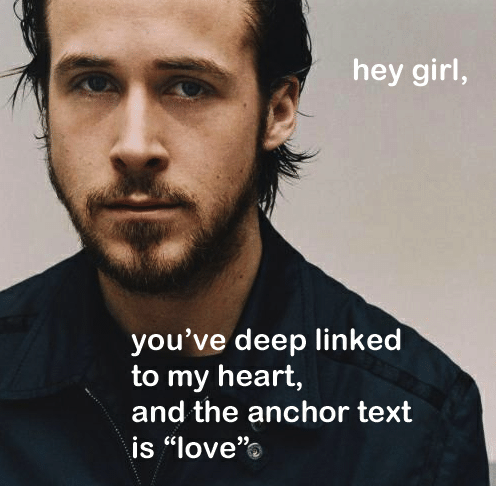Table of Contents
You encounter anchor text online every day, but you may not know what it’s called. When you’re reading an article online and you see text that’s underlined and (usually) blue, you know that’s a link. The words you click on are known as anchor text.
When you follow the link, it sends you to another page that should contain information closely related to the words you clicked on. Besides pointing you to a site with relevant information, good anchor text also helps Google and other search engines understand what web pages are about.
When you’re surfing the web, you may not think about how many purposes anchor text can serve for online readers, website creators, and the fate of most web content. It’s an important signal that helps search engines find, categorize, rank, and return the most useful results to users’ queries.
What is anchor text?
Simply defined, anchor text is the visible, clickable text of a hyperlink. Instead of listing the link’s exact URL, it provides a few words within the content you’re reading that tell you what to expect when you click on the link.
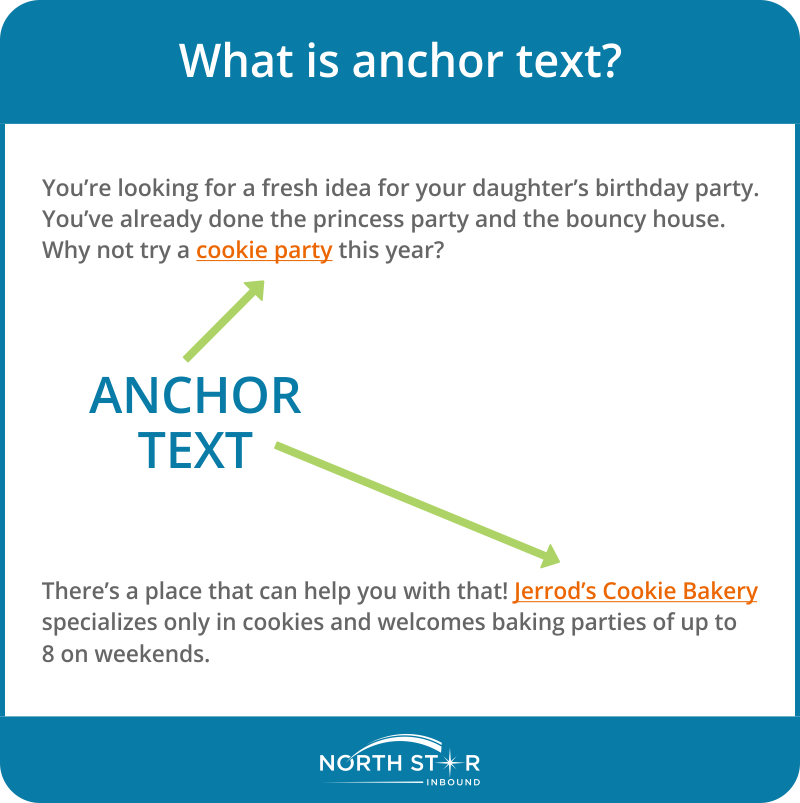
How does anchor text work?
By describing the article it links to, anchor text invites visitors to click on the link and learn more about the topic. Readers naturally expect that the linked article will be relevant to whatever the anchor text describes (and if it’s done right, it will be).
Search engines, on the other hand, have learned to evaluate the relevance between a link’s anchor text and its URL. When the URL and the anchor text correspond, search engines accept that the link anchor text is relevant to the page’s content. They deem it more valuable in the eyes of their users, which can help elevate it in their rankings, making it visible to more people.
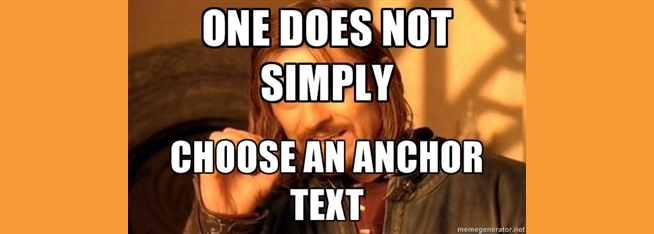
What types of anchor text exist?
Internal links
Internal links connect users to other pages within a single website. But they do more than help users navigate a site; internal links also establish the relationship between its pages, posts, and other content, thereby helping search engines understand the informational hierarchy. They also help spread link value, or ranking power, across a site’s various pages.
Anchor text is important when building internal links. The wording should be carefully selected, relevant to the purpose of the site, and useful to visitors in helping them find out more. Think carefully about why you’re linking and how to build links in a way that improves your internal linking structure.
External links
External links are the ones that other pages use to link back to your site; sometimes these are called ‘organic’ or ‘press’ links. Search engines regard the anchor text on external links as an indicator of how people view your page; this also provides them clues to what your pages may be about.
External sites can link to your site using links with numerous kinds of anchor text:
- Exact match anchors do just that: They match exactly the primary keyowrds of the page they’re linking to — like the anchor “cookie bakery San Diego” for a link to a the home page of a cookie bakery located in San Diego.
- Partial match anchors include a variation or rearrangement of the keyword or phrase on the linked-to page — like, for example, “chocolate chip cookie bakery” for the same page as mentioned above.
- Related anchors are not a direct match, but keywords or phrases that are closely related to the main one — like “cookie bakers.”
- LSI terms come from Latent Semantic Indexing, a system which pulls up variations or synonyms when a user searches for a main keyword. So if you’re targeting “cookie bakery,” the LSI results could include “cookie bakery online,” “cookie shop,” “pastry bakery,” “pastry shop,” and so on.
- Branded links use a brand name as their anchor text — like “Jerrod’s Cookie Bakery.”
- Brand + keywords combine a brand name with a keyword — such as “Cookies by Jerrod’s Bakery.”
- Naked anchor without any other anchor text. In these cases, the link itself is a sort of anchor and it is refered to as ‘naked’ url — such as https://jerrodscookiebakery.com/
- Site name links use the same URL but with cleaner anchor text — such as JerrodsCookieBakery.com.
- Article title links use the exact words from the title of the article they link to — like “Kids Love Jerrod’s Cookie Bakery.”
- Generic anchor text uses nonspecific words or phrases — like “Click here” or “Read more” — to encourage a user to click. NOTE: Because link anchor text needs to clearly indicate the subject matter of the link it describes, generic links are discouraged.
- Images also can be used as links. These are usually clickable and often can appear as a call to action button. Search engines use the text from an image’s alt attribute as the anchor text.
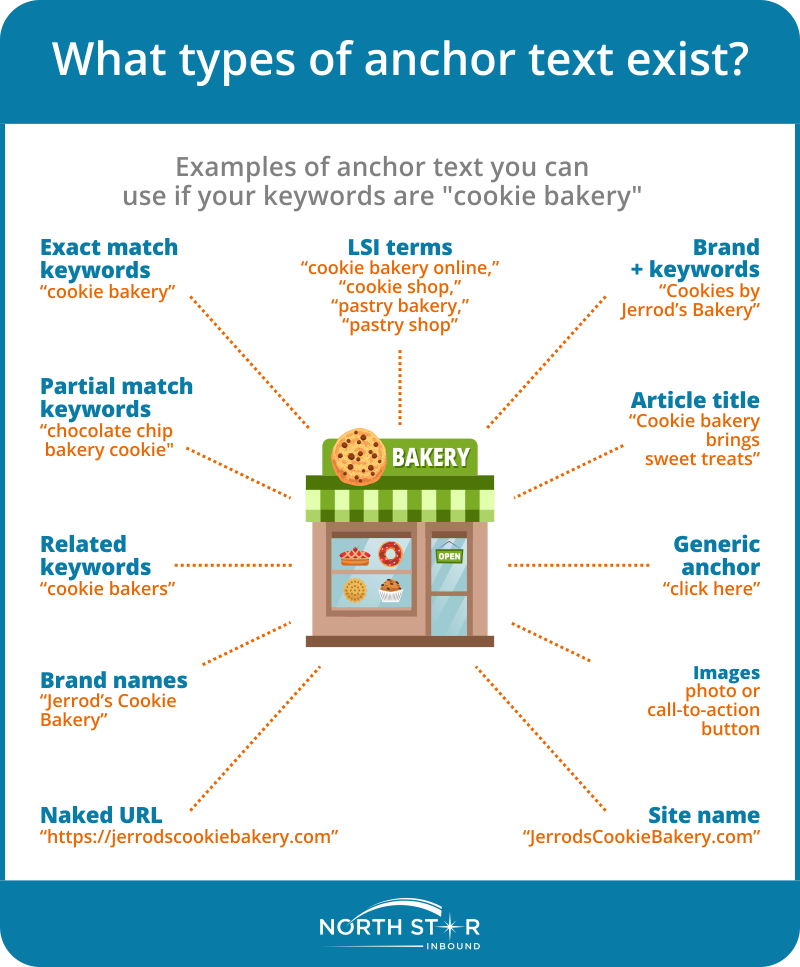
You usually don’t have control over the anchor text that other sites use for external links when they link back to your own site or content. Your best bet is to focus on the anchor text you use for internal links on your own website, making those as descriptive and relevant as possible for the pages they link to, and useful for the reader.
What should anchor text look like?
Imagine you’re writing a blog post and you’ve decided to link to this very article. The anchor text within your content is one part of the linking process. In the post you’re writing, you could make the link’s anchor text look like this: So what is anchor text, exactly?
The other part of linking involves the HTML code, which contains both the URL of the article you’re linking to and the anchor text that describes it. The first chunk of code is the URL, and the second part is the anchor text that describes the link. In HTML, it would look like this:
<ahref=”https://www.northstarinbound.com/blog/what-is-anchor-text/”>what is anchor text</a>
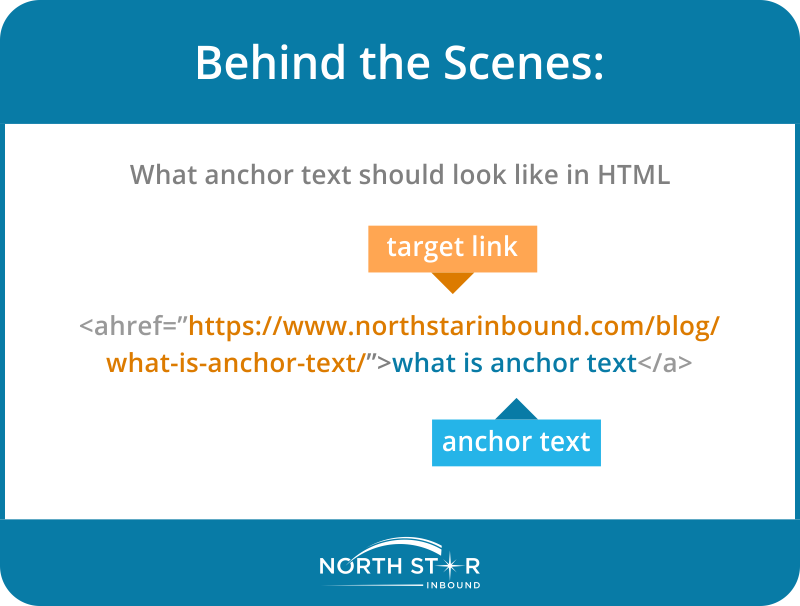
What makes good anchor text?
Good anchor text illuminates the target page’s content and entices readers to click on the link. It also exemplifies a few other traits:
- Concise. Just a few words (and no more) are enough for anchor text. Ask yourself, Which two or three words would best describe the linked page and convince the reader to click on the link?
- Relevant. When search engines consider how high to rank a link, they consider the topic of the source page and content of the anchor text, and evaluate how relevant it is to the target page. A highly relevant link can improve the ranking for both pages.
- Particular. The more specific your anchor text, the better. Keep in mind the content and intention of the pages you’re linking to as you devise the anchor text for each link.
- Light on keywords. Too many occurrences of the same keyword or anchor text — in either internal links within your website or external ones from other sites — can signal inorganic means of link building, which may raise a flag for search engines and possibly incur penalties.
- Varied. Instead of using the same keyword for numerous links, many SEOs consider it a better approach to employ numerous, similar variations of phrases and types for more natural anchor text.
How to use anchor text
Best practices for anchor text focus mainly on appropriate wording and formatting, judicious distribution of the types of anchors, targeting of optimal sites, and conscientious tracking of the anchors and keywords used. Below are several guidelines to help make your anchor text compelling, varied, safe, and effective:
- Keep anchor text relevant. This cannot be stressed strongly enough: The more closely related the wording of your anchor text is to the content of the page you’re linking to, the better the results will be.
- And keep it brief. A few words per link is plenty. Nobody is going to click on an entire sentence underlined in blue — and in fact, the visual disruption may cause some readers to tune out entirely.
- Make sure anchor text sounds natural. Anchor text must flow naturally within the content wording or else it’s obvious you’re just laboring to achieve an exact keyword match. Write high-quality, original anchor text that makes sense in the sentence and article.
- Avoid repeated linking with keyword-rich anchors. Too many anchor text links with exact-match anchor text is a blatant tip-off to Google and other search engines that the links weren’t acquired naturally.
- Vary your anchor text wording. It’s recommended that you employ a spread of related anchor text wording rather than using the same keyword each time. Consider the strategies of spreading an anchor text phrase across a sentence, and/or taking advantage of LSI terms to find related keywords that can expand your choice of anchors.
- Distribute different types of anchors wisely. Anchor text distribution can make or break your ranking among search engines. There are conflicting theories about exactly what combination works best — that depends heavily on your goals — but it’s generally agreed that you’re likely to get the best results by varying the type of anchors you use across each page.
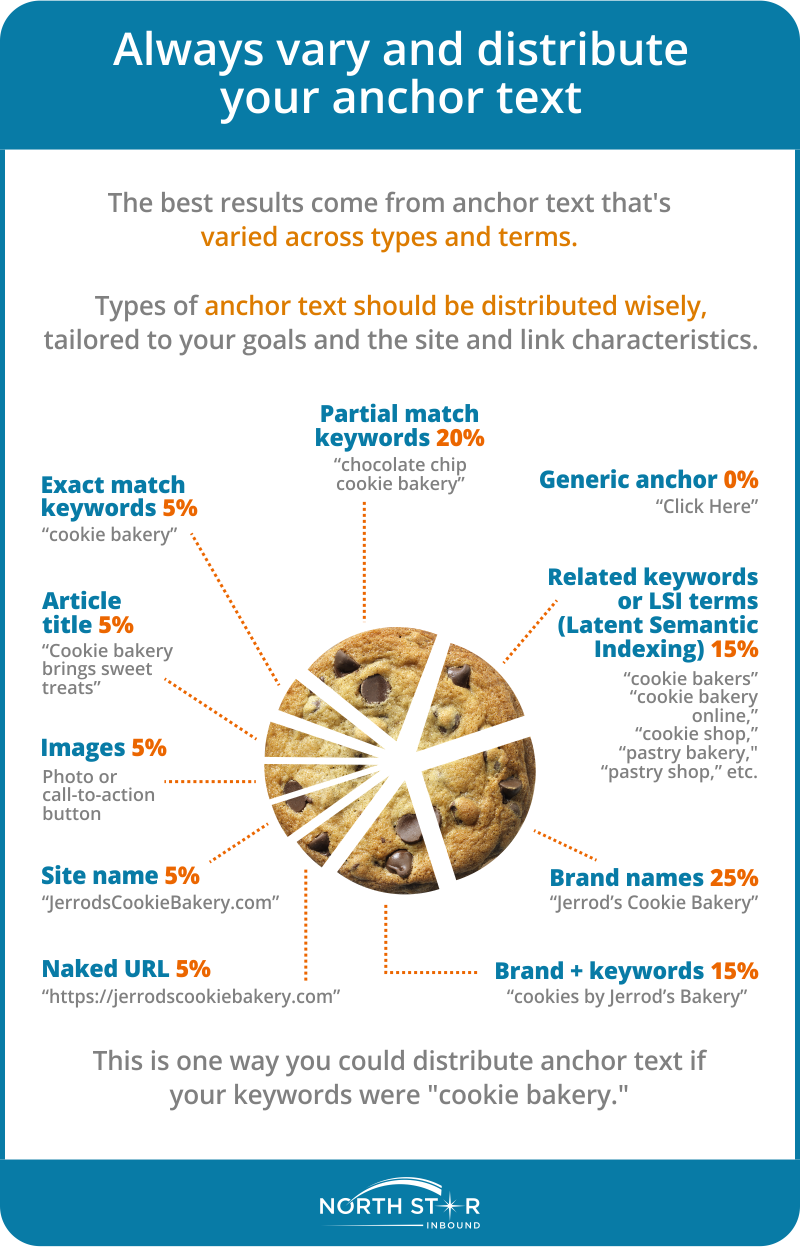
- Write useful guest posts. Guest posts are still an effective method to build your link profile. Consider using a variety of LSI and partial-match anchors when building links for these posts.
- Acquire links from the right sites. Receiving backlinks from authority sites is extremely beneficial for SEO. Aim for robust, authoritative sites that relate to your niche.
- Track your anchor texts. When building a link profile, make sure you’re not over-optimizing your site by using too many keyword-rich anchors. Keeping track of the anchor texts you’ve used is imperative to make sure you’re distributing them properly and not overusing exact keywords. Tracking methods can be as simple as an Excel spreadsheet or as detailed as a dedicated monitoring tool.
How not to use anchor text
In contrast, there are also several “don’ts” agreed upon for the proper use of anchor text. Like the best practices above, these also focus on choice of sites, wording, formatting, and distribution. Keep an eye out for these anchor text pitfalls:
- Don’t link to toxic sites. The sites you link to play a significant role in how search engines rank your page. Linking to toxic or spammy sites in hopes of acquiring reciprocal backlinks can be dangerous for your ranking and site integrity.
- Don’t use anchor text unrelated to the linked content. Baiting readers with click-bait anchor text that leads to a site with a completely different topic can cause ill will and damage your standing. Whatever you do, don’t try to fool your users.
- Don’t spam your anchor text. Repeating the same keyword in anchor text to gain links from a large number of pages — and thus get a higher ranking in search results — is spamming. Search engines recognize it and will penalize you for it. Don’t do it.
- Don’t use a complete sentence. Keep anchor text condensed and easy to take in at a glance.
- Don’t let keywords run your game. Write solid, useful content into which your anchor text fits naturally, instead of cobbling together weak copy that that’s only good for letting you squeeze in your exact-match keywords or phrases.
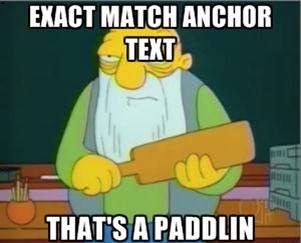
- Don’t camouflage links. Strange as it sounds, some sites try to make their design “stand out” with links that don’t look like links. Don’t fall for this counterproductive tactic. Use a contrasting font color for links and underline them, or people can easily miss them.
Although it can look small and simple on the page, anchor text works like the secret tugboat of the interwebs, tirelessly moving giant quantities of information in the desired directions. It helps send online users on the right trajectories for their queries and related content, and it signals search engines about a site’s value, relevance, and rankability. When it’s done right — concise, specific, relevant, varied, and light on keywords — good anchor text can be invaluable for driving traffic to your sites and pages. So … anchors aweigh!
